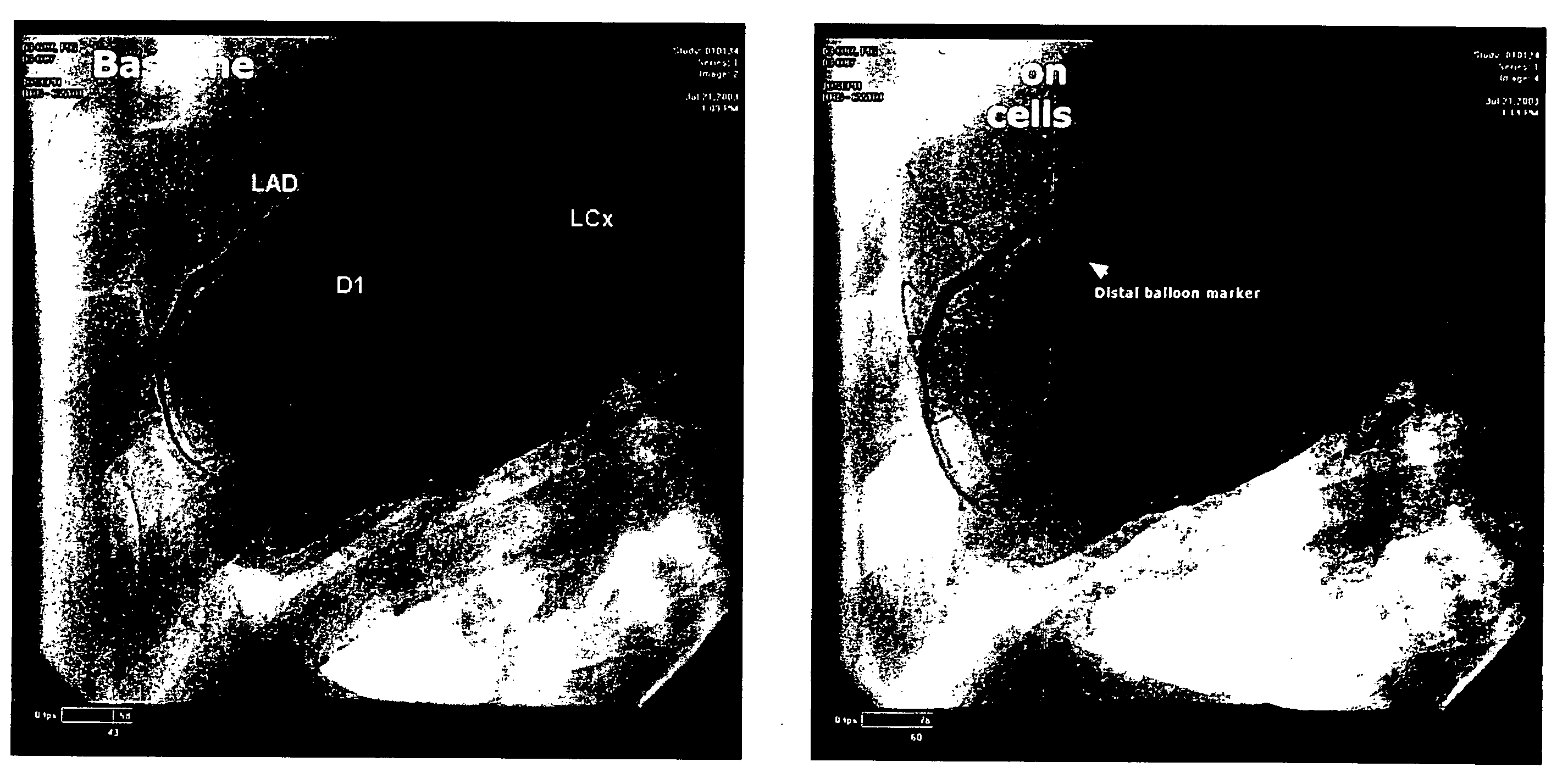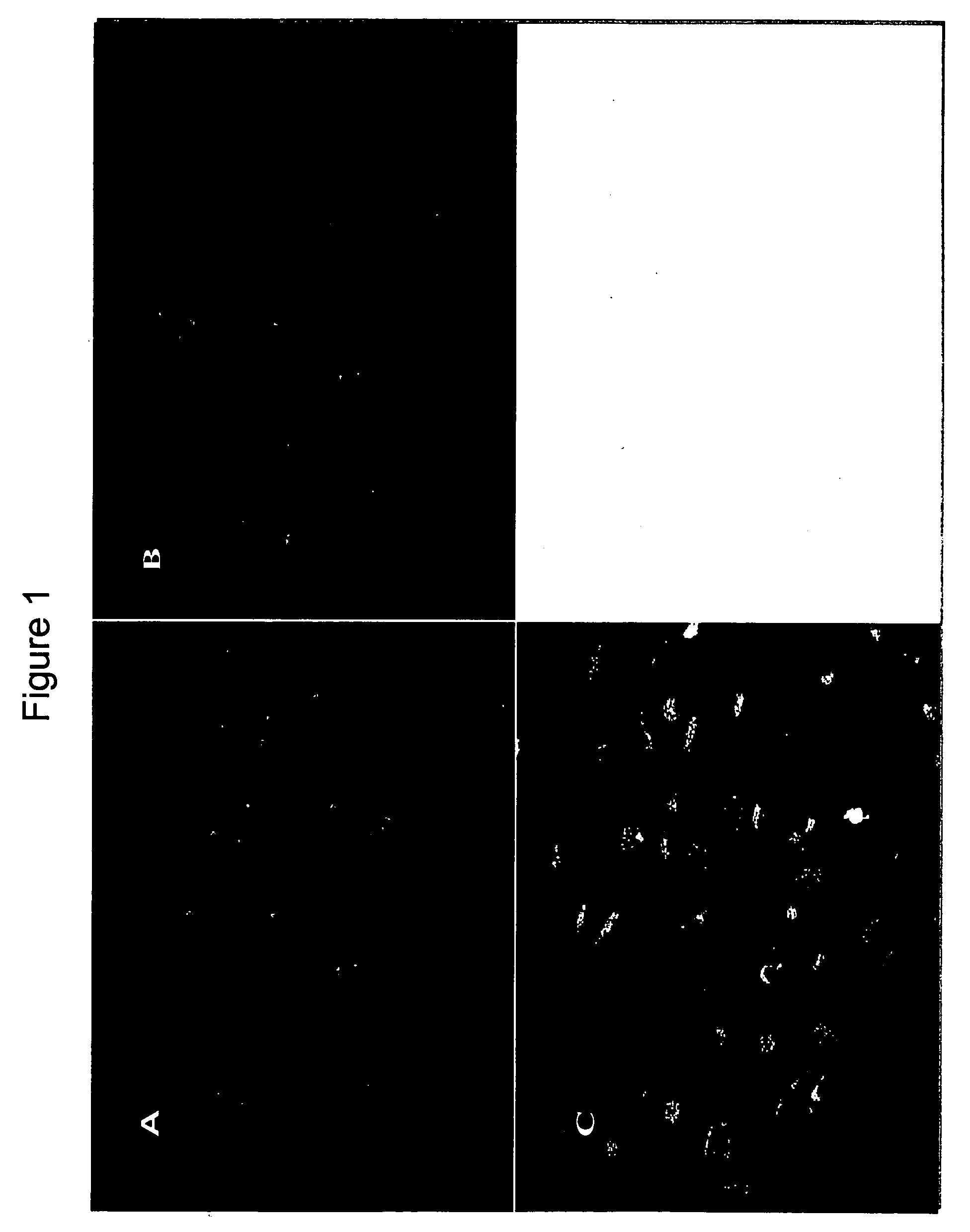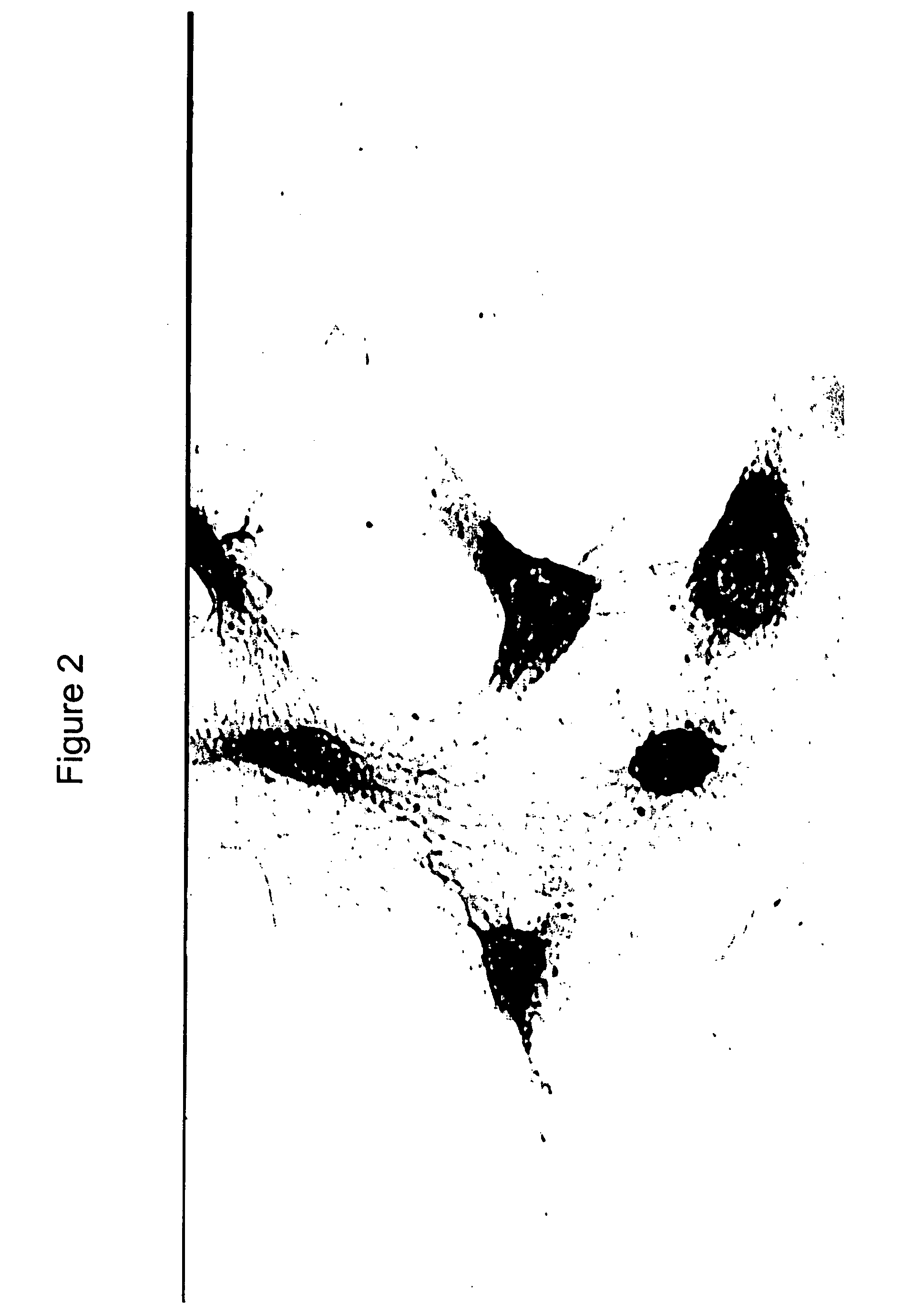Cell-based therapies for ischemia
a cell-based therapy and ischemia technology, applied in the field of ischemia cell-based therapy, can solve the problems of affecting the survival rate of patients with incomplete revascularization, the ramifications of treatment limitations may be significant, and the treatment is inadequate for a significant number of patients who remain incompletely revascularized, so as to promote cell differentiation, promote blood flow, and promote the formation of blood vessels.
- Summary
- Abstract
- Description
- Claims
- Application Information
AI Technical Summary
Benefits of technology
Problems solved by technology
Method used
Image
Examples
example 1
[0128] Isolation and Characterization of Endothelial Precursor Cells from Umbilical Cord Blood and Adult Bone Marrow.
[0129] Mononuclear cells were isolated from umbilical cord blood (UCB) or adult bone marrow (BM) and placed in short-term culture under conditions supportive of the development of endothelial precursor cells (EPC). Adherent cells recovered from the cultures were found to exhibit EPC characteristics, as analyzed using multiple in vitro assays, including cytochemistry, flow cytometry, microscopic morphology and immunostaining.
[0130] 1) Isolation of Cells
[0131] Mononuclear cells (MNC) from fresh UCB or BM were isolated using density gradient centrifugation. EPC cells were isolated expanded in cell culture according to the method of Kalka et al. (2000) PNAS 97: 3422-3427. Briefly, the MNC were plated on human fibronectin coated tissue culture flasks at a density of 4-6×106 cells / ml (UCB MNC) or 1-2×106 cells / ml (BM MNC) in EC basal medium-2 (EBM-2) (Clonetics, San Dieg...
example 2
[0146] Transplantation of UCB and BM-Derived EPC in an in vivo Model
[0147] In vivo studies of neovascularization in a murine hind limb ischemia model, in NOD / SCID mice, were performed. The results illustrate that UCB is an optimal source of EPC. Although UCB lacks stromal elements present in BM, EPC from UCB demonstrated an equivalent biological effect in the in vivo model to that exerted by EPC derived from BM sources.
[0148] 1) Treatment Groups. All procedures were performed in accordance with Case Western Reserve University's Institutional Animal Care and Use Committee. NOD / SCID mice, age 10-15 weeks were used in this example. Prior to surgery, the mice were irradiated with 2.5 Gy from a Cesium-1 37 source to further reduce rejection of injected human cells. The mice were fasted over night but allowed free access to water. They were then anesthetized with intraperitoneal injection of a combination of ketamine and pentobarbital. Under sterile conditions, a small skin incision was...
example 3
[0153] Selection and Purification of CD133+ Cells from UCB
[0154] For isolation and purification of CD133+ cells, mononuclear cells were isolated from UCB as described above and were labeled with CD133+ conjugated magnetic beads, followed by automated sorting through magnetic columns (Automacs, Miltenyi). By passaging the labeled cells through a single column, the routine yield was 0.4% of the original MNC, with a purity of CD133+ cellsranging between 75% and 85%. By passage of the MNC through two consecutive magnetic columns, the purity could be raised to 91.2% CD133+ cells, but the yields dropped to 0.2%. Further purification attempts were made by fluorescence-activated cell sorting (FACS). CD133+ cells were isolated by passage through one magnetic column, stained with CD133-phycoerythrin (PE)-conjugated antibody and further purified by FACS. As illustrated in FIG. 7, the resulting purity after passage through one magnetic column was 83.02% CD133+ cells. After FACS, the purity was...
PUM
| Property | Measurement | Unit |
|---|---|---|
| concentration | aaaaa | aaaaa |
| concentration | aaaaa | aaaaa |
| time | aaaaa | aaaaa |
Abstract
Description
Claims
Application Information
 Login to View More
Login to View More - R&D
- Intellectual Property
- Life Sciences
- Materials
- Tech Scout
- Unparalleled Data Quality
- Higher Quality Content
- 60% Fewer Hallucinations
Browse by: Latest US Patents, China's latest patents, Technical Efficacy Thesaurus, Application Domain, Technology Topic, Popular Technical Reports.
© 2025 PatSnap. All rights reserved.Legal|Privacy policy|Modern Slavery Act Transparency Statement|Sitemap|About US| Contact US: help@patsnap.com



